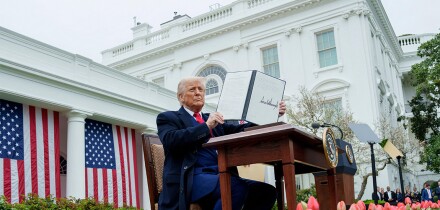Alpha Generation Potential
For many years, the high volatility of foreign exchange markets has made them attractive to speculators. Even a major currency pair such as the dollar/yen can move several percent in a day, a pleasant event if one has established the right position beforehand. And it is easy to leverage foreign exchange positions by using forward contracts in which there is no capital exchange. So it is relatively straightforward to enter a contract which will, for no initial outlay, result in a large gain if the rate moves as anticipated.
These conditions are perfect to attract speculators to the markets, but there are many investors who solidly maintain that the FX markets are efficient and that it is impossible to make money trading them. So what is the truth? Can one generate return, or alpha, in FX?

The Evidence
The jury was still out 10 years ago. Though some companies, such as Record Currency Management in the UK and GKIM in the U.S., had been generating returns for their clients for several years, there was still a strong feeling that these might well have been due to pure chance and luck, because there was not a large set of results to examine. The past five years, however, have seen an explosion in the number of FX-based funds and programs. In 2002 Frank Russell performed a survey that analysed the results of over 150 programs, where a similar survey in 1998 had only had 30 to look at. Both of these surveys, and two others in 2000 and 2001 came to similar conclusions. Some 80% of existing programs added value, and overall, including losses, the added value was about 1% of notional amount. Many firms systematically exceeded this. Those firms with experience and expertise in the area appear to be able to successfully trade foreign exchange as an asset class.

Methods Of Generating Alpha
There are a variety of ways to generate alpha in the FX markets. A top team of spot traders, a group of economists or a fully trained neural net algorithm might all work well. But the method which has leapt to the front of the pack is the so-called 'technical-type' back-tested models. These have a rigorous rule-based approach, which means that their past performance is unambiguously determined. It is this class of models which we explain here.
It is often supposed that it is difficult to successfully trade the FX markets and there is something of an air of secrecy--possibly assisted by some program managers--about how FX trading models work. In fact, there is a small number of basic model types, which are successfully used in a variety of currencies, which have been profitably employed for several years. This statement can give rise to incredulity--surely, if there are predictable patterns, they would long ago have been traded away? This is not so. The degree of predictability of a currency move is never 100%, or even close, so the strategies are never risk free. They are an investment in which risk is taken to generate return, as in the equity markets.
Moreover, the reason that these tradable behaviours exist is that the FX markets are secondary to many others. The majority of foreign exchange transactions are not executed with profit in mind. They are put on to hedge an investment, because cashflows are being repatriated as part of a larger deal, and for a host of other reasons. Thus predictable features of the market will not necessarily be traded away because most trades are done without reference to them.
How Do The Models Work?
Essentially there are three basic model types that can be used to generate alpha. These are:
* Trend
* Carry or Differential Forward
* Option strategies
There are a variety of other types as well such as range trading models and channel detectors, but the three above dominate the arena. They have in common the fact that they all use data from the recent past to predict future FX rate behaviour. This data may be from the FX rate itself or from other markets such as the option market, or may be more econometric in nature, but it must be available as a time series which may be regularly updated.
Trend Type Models
All of these models rely on the fact that a currency, which has made a significant move in one time period is likely to move in the same direction in the next period. There is a great number of different trend models available, from simple momentum methods to sophisticated GARCH techniques. In general if an exchange rate works well and generates positive back-tested returns with one trend method, it is likely to work with others. In trend models, as indeed for all model types, one needs to take great care that one does not over-optimise, by using too many parameters to fit to the data. It is easy to obtain fictitiously good back-tested results, which have little relevance to the future.
Below is a graph and data table of the results of a simple single moving average trend model used in a variety of currencies. The only variable, which may be changed for each currency is the number of days in the moving average. As can be seen, the results even for this simple model are reasonably good.

Carry Or Differential Forward Model
This is a popular model that has been successfully traded for several years. It utilises the fact that the forward rate is not a good 'predictor' of the future spot rate. When the forward rate is higher than the spot rate, one sells a forward contract; when it is below, one buys. In effect one borrows in the lower interest bearing currency in order to invest in the higher, and as long as the currency does not on average move to negate these gains, profits will accrue. Below we show the results of pursuing this strategy using one-month forwards in a dozen currencies, with the additional feature that when one-month option volatility reaches 12%, trading ceases until it falls. This improves the performance because it cuts out short term noise.
As can be seen from the graph, the performance, particularly with the volatility feature, is robust and all currencies give positive returns.
Option Trading Models
Option models are a rich field, partly because only a few institutions have sufficient data to back-test them adequately. In general options are fairly priced, but there are small persistent features of the markets that can be exploited. For example, it is better on average to sell short term options and buy long term, one year or greater. Additionally, implied option volatility itself is a reasonably predictable variable--it mean reverts and is spiky and noisy in the short term. The model below takes advantage of both these facts. It sells dollar/yen one week straddles whenever one month option volatility is above 5%, and otherwise does nothing. Although the absolute level of returns is not very high, the returns themselves are smooth.
Combining Models
It would be much to expect of a model that it would work all the time. For example, trend and differential forward models work best in low volatility environments and are best cut out of when vol is high. Thus it is good to have a range of models that can be used together, in a traditional diversification approach, or better, may be switched between, so that they are only traded in environments in which they perform well.

Conclusion
It seems increasingly likely that it is possible to generate alpha with foreign exchange models. Currency funds and CTAs are a growth area and more trading programs are being initiated as it becomes apparent that this is a source of return unconnected with traditional markets such as equities or bonds. The air of mystery surrounding the workings of these models is unjustified. The models that work and have been used successfully over a many years are relatively simple and easy to trade. Indeed, 85% of CTA returns may be explained by just one model with three moving averages. There is higher risk in using over complex and over optimised models, which might truly be difficult to understand, than in using the relatively simple strategies which have shown their worth.
This week's Learning Curve was written by Jessica James, a director in the FX risk advisory group at Citigroup in London.






